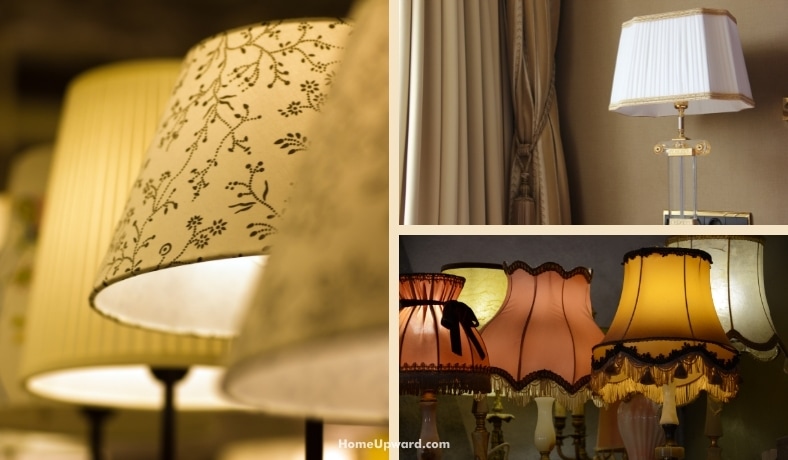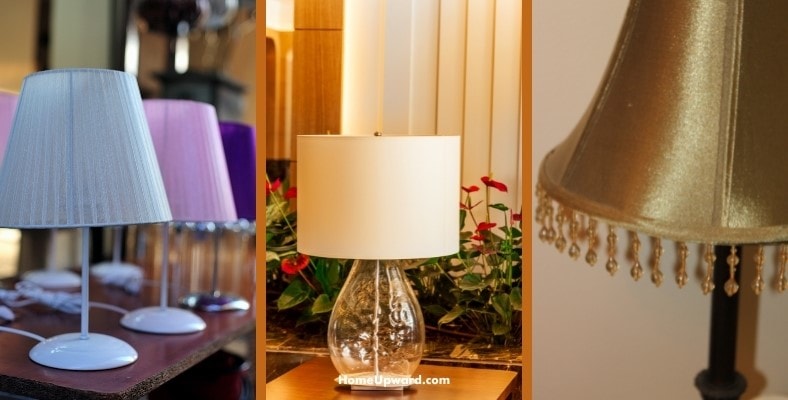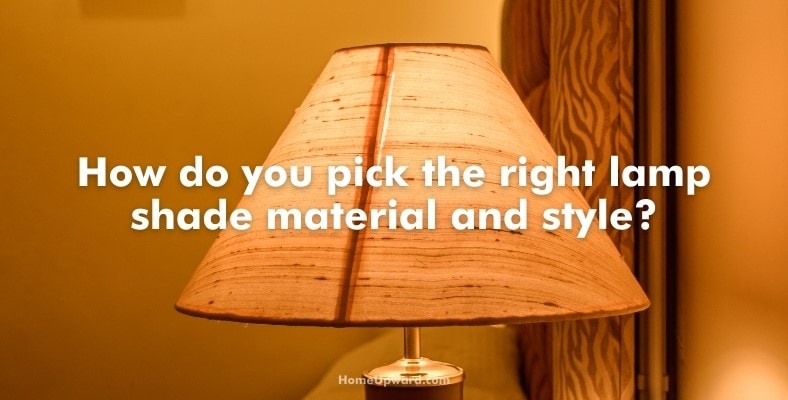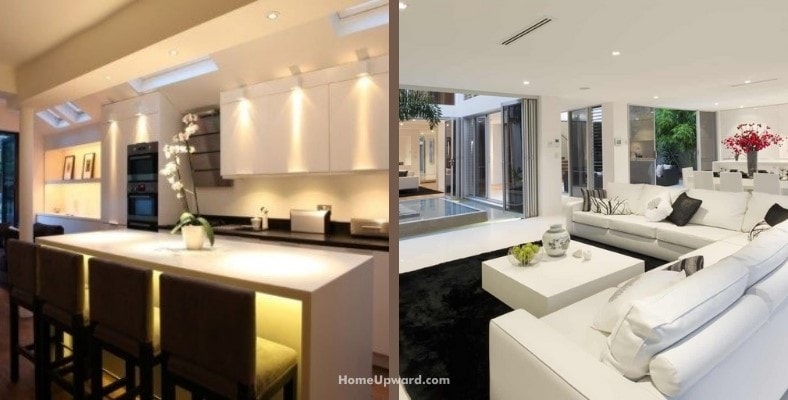Contents
How Do You Pick a Lampshade Color?
Picking a lampshade color is an important decor decision that makes a big impact on any room you’re styling. Here are some tips for picking the color and choosing your color based on the lamp base you’re working with so you can finally stop asking yourself, “What color should my lamp shades be?”
Tips for Picking the Color
If you don’t know where to start, a good tip is to simply pick a color you already have in the room, whether it’s an accent color or a primary color you have throughout.
If you don’t want to go that route, another tip would be to stick to something neutral that matches with just about anything.
Before you select any lampshade color, you should first think about your lifestyle and what that means for your lamp shade. For example, if you have kids or pets, you might not want to pick a white one that will get dirty quickly.
Selecting a Lamp Shade Color Based on the Lamp Base Type
A good cue to take is from the lampshade base you currently have that you’re trying to find a shade for. If you have a white lamp shade base, you could contrast it with something dark like black or keep it monochromatic with a white shade. If you have something darker, you could reverse these colors for similar effects.
What Lampshade Gives the Most Light?
If you want to add the most light to a room you can, white or light-colored translucent lamp shades give the best light. Some colors you may want to consider include light gray, beige, cream, or off-white.
As far as light is concerned, you will also want to choose a lamp shade fabric that isn’t completely opaque. Something like silk or linen will allow more light in than heavier, thicker fabrics with linings.
How Do You Pick the Right Lamp Shade Material and Style?
Another important thing to consider when selecting a lamp shade is the shade’s material and style. The color, material, and style contribute to the overall look and feel of the room you’re designing, so choose wisely.
If you’re stuck trying to figure out what lampshade to pick, here are some ways to start considering the decision.
Do Lampshades Need to Match the Room?
Whether or not lamp shades need to match a room is an interesting question.
If you’re wondering if the lampshade you choose needs to match the other lampshades in the room, the answer is no. You can feel free to mix and match as you please, and you can keep the room feeling consistent by matching other things, like fabric or style.
You should, however, consider how you want your lamp shade to match the rest of the room, things like couches, curtains, rugs, and other textiles you may have. While they don’t need to be the same color, you could use the art of color theory to choose a complementary or contrasting color depending on the mood you’re looking to create in your room.
Choosing the Right Material (Opaque vs. Translucent)
When selecting the material, you’ll want to ask yourself how much light you want to get from your table lamp or floor lamp.
- Is it to be used as the primary light source in a room? Then you’ll want to get a material that is more translucent as it will emit more light.
- Will it mainly be used as a reading light, or ambiance? Then you might prefer an opaque style made of a thicker material to keep the light minimal and glowy.
Recommendations Based on the Shade Material
If you choose a linen shade, opt for a lighter color like cream or beige to match the airy characteristics of the material.
If you choose a shade that is paper, you should select your color based on how much light you want in the room – selecting a dark color for a darker space and a lighter shade for a lighter room.
If you choose a burlap lamp shade, commit to the dimming effect with a dark grey or black lampshade to add ambiance to the room.
10 Quick Helpful Rules of Thumb
Stuck picking a lampshade? When in doubt, stick with these ten quick rules of thumb:
- Choose a color that already exists in the room.
- Choose a neutral color that goes with most things.
- Decide what kind of light you want, and pick your fabric based on that to ensure you’re happy with the final pick.
- Consider the lifestyle you live. If it’s bound to get dirty, choose a darker color.
- Materials like paper and burlap will be more durable than linen or lightweight cotton.
- Get inspired by your lamp base and select a shade that complements it. Brass or copper lamps look great with white shades, porcelain looks best with a taupe shade, and crystal lamps work well with just about any color.
- Let the function and theme of the room guide you.
- Choose a style and color that fits in well with the furniture and decor that immediately surrounds it.
- Choose a shade that is twice as wide as the lamp base itself.
- Make sure the shade is big enough for the bulb.
These tips won’t steer you wrong.
How Do You Choose The Right Lampshade According To Design Aesthetic?
Your design aesthetic can be the simplest way to choose a lampshade. Whatever your design aesthetic is, do some research on the lamps of that era or style. For example, search for Mid Century lamp shades if that’s what you’re into. You’ll see photos of rooms designed in that style. Take a close look at what you see and use that as inspiration.
Is Daylight or Soft White Better Lighting for A Room?
Daylight is usually the preferred type of lighting for a room, but when it’s not available, whether at night time or due to poor weather, soft white light from a lamp offers excellent ambient light for the room that keeps it feeling bright and open.
Color Temperature Recommendation Breakdown
Your options for light bulbs include:
- Extra warm white – similar to candlelight, best for low-light areas when you want an ambient effect
- Warm or soft white – warm and inviting, similar to incandescent lighting
- Cool white – a relaxed and vibrant tone great for bathrooms and kitchens, identical to morning light
- “Daylight” light bulbs – similar to sunlight at high noon, used to invigorate a space but best for commercial applications
You may be surprised at how much the light bulb you choose changes the impact of your lighting in the room.
Consider Using A Smart Light With Multiple Color Options
If you’re stuck between multiple colors, there might be a solution that lets you have all of them. Look into smart lights, which can change color with the touch of a phone button. These lights genuinely allow you to have it all – from different shades of white to more exciting colors like yellow or red.






